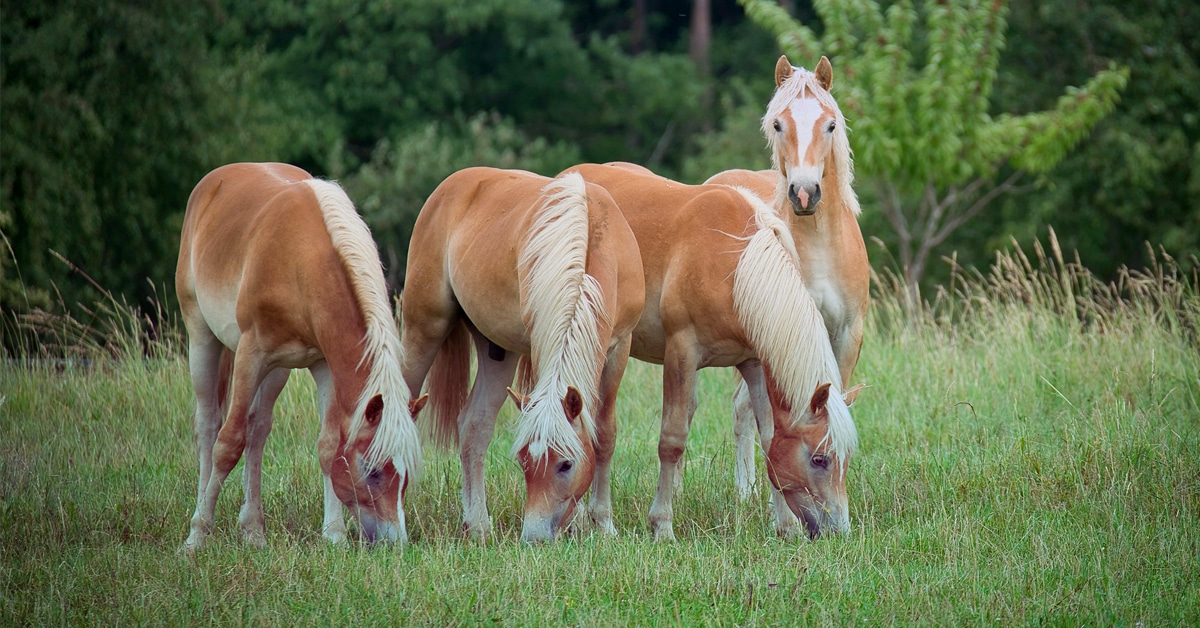
Iron deficiency anemia does not exist in adult horses. - Eleanor M. Kellon, VMD
It's common knowledge that horses with anemia and performance horses should get iron supplements to build their blood – right? Wrong!
Close to 70% of the body's active — not stored — iron is in the red blood cell pigment hemoglobin where it functions to bind oxygen from the lungs and carry it to the tissues. Iron is also the active binding element of myoglobin, the pigment that makes muscle red and acts to temporarily store oxygen in muscle and deliver it to the aerobic metabolic pathways for generation of energy. Iron is an indispensable component of hundreds of other proteins and enzymes in the body.
The body also takes advantage of iron's high reactivity to shuttle free electrons in the chain reaction that generates energy from foods in the form of adenosine triphosphate (ATP). A few antioxidant enzymes also use iron, and iron is used in body systems that detect dangerously low levels of oxygen.
However, iron's free and easy contribution in free radical reactions can have a black side. In white blood cells it is used to generate free radicals which are used to destroy invading organisms. When unchecked, that same capacity to generate free radicals can easily damage tissues.
While horses can be anemic for a variety of reasons, iron deficiency is not one of them. Except for foals raised in stalls with no access to dirt, iron deficiency anemia has never been found in a horse.
On the other hand, iron overload as evidenced by livers turned black with extra iron is a fairly common finding on necropsy. In a study of horses at a slaughter house, 28% were found to be iron overloaded. Two studies have found iron overload is common in horses with insulin resistance. The common problem of coat bleaching is associated with high iron and/or low zinc and copper.
Iron overload is a well recognized problem in people with a genetic predisposition to over absorb iron, as well as those with needs for frequent transfusions that release iron when the red cells die. Iron overload from the diet has also been documented from a host of animals kept in captivity, from birds to rhinoceros, to lemurs, and even dolphins.
Because free iron is so dangerous to the body, there is an intricate system to keep it under control. Iron can be absorbed through the gaps between intestinal cells, a process that is increased in the presence of products of fermentation of hay/forage. Otherwise, iron is absorbed into intestinal lining cells in the small intestine. From there, its release is controlled by hormones/regulators that can block movement out of the cell and control the electrical charge of the iron, which in turn determines if it can be picked up by its carrier protein, transferrin.
Hormones also regulate how much can be taken up by the body's cells. Any excess is stored bound to the proteins ferritin or hemosiderin.
Iron overload probably occurs because the unregulated pathway of absorption between cells is very active in horses. Once inside the body, there is no pathway for excreting excess. It has also been shown in insulin resistant humans that this disorder increases iron absorption, and the high iron worsens the Insulin Resistance (IR) in a vicious cycle.
Before considering an iron supplement or injection for your horse, always have iron status checked by blood level of ferritin. This can only be done at the Comparative Hematology laboratory at Kansas State University.
The bottom line here is that supplementing iron is not something you need to be worrying about, even for anemic horses, and for IR horses it is wise to restrict iron as much as possible.
For more information see 2013 NO Laminitis! Conference proceeding IRON OVERLOAD AND INSULIN RESISTANCE, available on www.ecirhorse.org and International Veterinary Information Service — www.ivis.org.
About ECIR Group Inc.
Started in 1999, the ECIR Group is the largest field-trial database for PPID and EMS in the world and provides the latest research, diagnosis, and treatment information, in addition to dietary recommendations for horses with these conditions. Even universities do not and cannot compile and follow long term as many in-depth case histories of PPID/EMS horses as the ECIR Group.
In 2013 the Equine Cushing's and Insulin Resistance Group Inc., an Arizona nonprofit corporation, was approved as a 501(c)3 public charity. Tax deductible contributions and grants support ongoing research, education, and awareness of Equine Cushing's Disease/PPID and EMS.
THE MISSION of the ECIR Group Inc. is to improve the welfare of equines with metabolic disorders via a unique interface between basic research and real-life clinical experience. Prevention of laminitis is the ultimate goal. The ECIR Group serves the scientific community, practicing clinicians, and owners by focusing on investigations most likely to quickly, immediately, and significantly benefit the welfare of the horse.
There are lots of informative articles in our section on Health & Education.

































